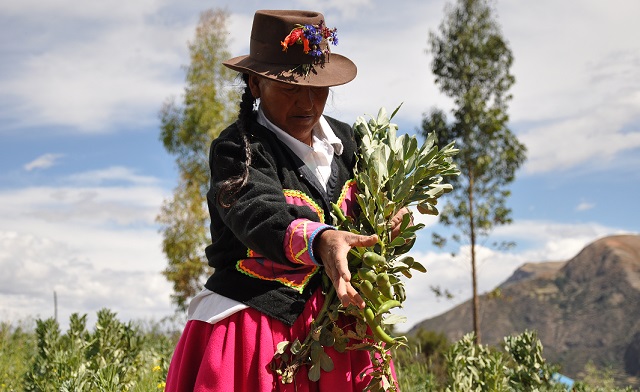Peru
![]() FAO partnered with the Peruvian Ministry of Agriculture and Irrigation, and other government agencies and academic institutions to carry out the AMICAF project in Peru. The first two components of the AMICAF approach were implemented.
FAO partnered with the Peruvian Ministry of Agriculture and Irrigation, and other government agencies and academic institutions to carry out the AMICAF project in Peru. The first two components of the AMICAF approach were implemented.
AMICAF went into operation in Peru in 2013, and all of the activities were operationally closed in March 2015. Many partner agencies are expected to be involved in AMICAF's 2nd phase of activities in a new recipient country through the South-South Cooperation scheme.
Key findings
 The AMICAF project evaluated the impact of climate change on 16 basins and 16 crops in Peru and analysed the vulnerability factors of food security in rural households before 2050.
The AMICAF project evaluated the impact of climate change on 16 basins and 16 crops in Peru and analysed the vulnerability factors of food security in rural households before 2050.
- For the period 2036-2065, results show a mean temperature increase (with respect to 1971-2000) from between 2°C to 3°C (maximum) and 4°C to 6°C (minimum) for the country as a whole. Precipitation increase will be between 10% and 20% nationwide. (Component 1: Climate down scaling model).
- There will be an increase in mean flow rates by the end of the 21st century in the northern basins. (Component 1: Hydro model).
- A gradual increase in the mean flow rate in the central basins will start in the mid-21st century. In the southern basins, there is a constant increase in the flow rate. The mean flow rate will have increased by the end of the 21st century (Component 1: Hydro model).
- The diverse crop responses in different departments (positive and negative impacts) are the result of the complexity of the lands where they are grown (Component 1: Crop model).
- In the highlands, projections indicate that the negative impacts of climate change have resulted in decreases in the yields of main crops such as potatoes, lima beans, green peas, barley, soft corn, wheat, and beans (Component 1: Crop model).
- The impact of changes in yields on agricultural income are moderated by prices, the choice of crop, labour decisions, and other mitigating activities, which altogether reduce the impact on wellbeing caused by agricultural productivity losses/gains as a result of climate change. (Component 2: Vulnerability analysis).
- The factors that have an influence on food vulnerability were divided into three categories:
i) result factors: income, school dropout
ii) risk factors: climate risk, number of household members, percentage of household members that work
iii) household characteristics that help to face risk factors, such as assets, infrastructure and education (Component 2: Vulnerability analysis).

